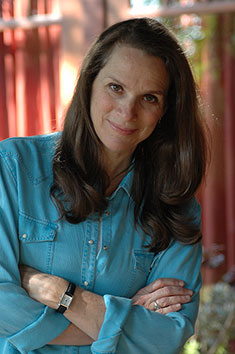 Joy Horowitz on the woman who handed Big Tobacco its first major defeat.
Joy Horowitz on the woman who handed Big Tobacco its first major defeat.
published in the Legal Affairs
When I met Madelyn Chaber, it was not love at first sight. Chaber is a friendly, unpretentious woman of 53, but at the time of our first meeting she was also my father's lawyer, and I had my doubts.
Eight years ago, my father, a Los Angeles psychoanalyst named Milton (Mike) Horowitz, was diagnosed with mesothelioma, a fatal form of lung cancer caused primarily by exposure to asbestos. In the 1950s, he had smoked Kent cigarettes, whose filters were made with a highly lethal form of asbestos called crocidolite. Because the asbestos was thought to enhance the filters' effectiveness, the Lorillard Tobacco Company had marketed Kent as a "health" brand. When he discovered he had cancer, my father decided to sue Lorillard and the filter manufacturer for fraud and negligence, and he sought Chaber's help.
I was apprehensive. The odds of victory were definitely not in my father's favor. Going back to 1954, when the first wave of negligence lawsuits against Big Tobacco began, the tobacco industry had a perfect record in product liability litigation, never paying out a penny in damages. I was opposed to my father's decision to spend the end of his life battling lawyers in court. I worried for his health, and I wanted him to preserve the few moments of pleasure he could eke out of a day. Most of all, I was afraid that Chaber, who worked at a reputable but small San Francisco firm, was raising false hopes.
After I checked around, calling my attorney friends in the Bay Area, my skepticism only deepened. No one I spoke to had heard of Chaber. Although her law firm was respected for its work on behalf of asbestos victims, my father had chosen it for a more dubious reason: One of Chaber's partners was named Harowitz, a name for which he had an obvious affinity. When I finally met Chaber in person, I found myself sizing her up for all the wrong reasons: Her sweater looked like the shag rug from my college dorm room, and her retro haircut brought to mind Jane Fonda's in Klute. I knew I had no business telling my father what he should and shouldn't do, but I felt protective of him nonetheless.
I was also envious of her growing presence in my father's life. I watched as they bonded as fellow native New Yorkers and intellectual equals. She, not I, seemed to be able to offer him a pressing reason to live.
On August 31, 1995, Chaber and my father won a $2 million jury verdict against Lorillard and Hollingsworth & Vose, the filter manufacturer. The case, which was upheld on appeal to the United States Supreme Court, marked the first judgment paid by a tobacco company for cigarette-related disease. The Wall Street Journal heralded it as the "biggest defeat in the history of tobacco litigation." Shortly after, my father died, at 72.
One morning this past summer, I visited Chaber at her home in Alameda, Calif. I knew she was fond of my father, but I had no idea how much he meant to her as a client. She saw him as "unimpeachable," she said, "a kind of a pillar." He was meticulous about keeping medical files, insurance forms, and records of lost income due to illness. He voraciously scoured medical journals to learn everything he could about his cancer. His fearlessness gave Chaber an assurance that was not justified by the trial history against Big Tobacco. "Your father's case," she said, "put me on a different level with my own self-confidence. I developed a belief in myself. I don't know that I would have gotten involved in tobacco cases given how marginal it was for anyone to prevail without that."
In addition to my father's help, however, winning is in Chaber's blood. "I don't like to lose," she admitted. "I definitely do not like to lose." Her record in court bears this out. In 1999, four years after my father's victory, a San Francisco jury awarded her client Patricia Henley, a former smoker with inoperable lung cancer, $51.5 million (later reduced to $26.5 million). Then, in March 2000, Chaber scored another victory when a jury awarded $20 million in punitive damages to a 40-year-old woman named Leslie Whitely in a case against RJ Reynolds and Philip Morris. Because of the chastening effect that her victories have had on Big Tobacco, in litigation circles Chaber has earned the nickname the Goddess of Deterrence. She has helped to undermine the assumption that the tobacco industry is invincible in American courtrooms.
Even so, not many personal injury lawyers are willing to take on Big Tobacco. Chaber estimates that, in most instances, it costs about half a million dollars to try a case. "I'm always in hock, because of the investment of time, energy, and money," she said to me. Though by no means impoverished, she has taken a professional route that is financially neither easy nor safe. Depending on the outcome of her appeals in the Whitely and Henley cases, for example, she may have to rent out the back office of her house to offset her mortgage payments. She stands to earn a huge sum of money from those lawsuits, but even if the appeals go her way, she doesn't expect see any of it for years.
Despite the reluctance of many lawyers to assume such risks, there are signs that Chaber's pioneering work has influenced her peers. Last year, the Los Angeles attorney Michael Piuze won a $3 billion punitive damage award later reduced to $100 million against Philip Morris, and he credits Chaber for inspiring him. Chaber has teamed up with what she calls a "ragtag" band of lawyers, the Tobacco Trial Lawyers Association, to share information about the tobacco industry nationwide. According to Richard Daynard of the Tobacco Products Liability Project at Northeastern University School of Law, there are now more than 4,000 cases pending against the tobacco industry in state and federal courts; in 1998, there were fewer than 1,000.
Once my father and Chaber joined forces for his deposition, he had already begun suffering the effects of chemotherapy severe weight and hair loss, neuropathy in his feet and hands, nausea, fatigue, and depression. During her direct examination, she asked my father about his work as a teenager. "I was a big healthy kid," he began but he was overcome by a surge of tears at his debilitated state. "I'm sorry. I get upset about this." Chaber also knew how to transform his vulnerability into gratitude, to avoid conveying an impression of bitterness. "One of my daily activities was swimming," he said, when she asked about his hobbies and recreation. "I swam a half a mile a day. I was pretty vigorous. I've always been a swimmer. And I play the piano. And I'm active with my grandchildren ... playing with my wife, and going places, and keeping up a busy cultural and social life. You know, it was it was a very good life, actually."
Working with Chaber seemed to revitalize my father. Within months, his cancer went into a complete remission, despite the terminal diagnosis. His hair started growing back, albeit white as snow rather than brown and wavy. His mental and physical state improved. He and my mother took a cruise to the Caribbean. By the time he walked into court that fall, Chaber teased him that he was looking too healthy for a jury to believe he was dying.
Chaber once worked as a special-education teacher in the Bronx, and the experience has proven invaluable for her work before juries. She knows how to break down complex pieces of evidence into bite-size chunks. And, like any good schoolteacher, she modulates her voice to great effect; during moments of particular drama, she is known for speaking to juries in a barely audible whisper. Sometimes she shifts gears, though, and takes the moral high road. In her closing argument in the Whitely trial, she told the jury that the case was "about selling death, about cancer by the carton," and she accused Philip Morris and RJ Reynolds of being "drug pushers."
In my father's case, Chaber knew that such rhetorical flourishes were unnecessary, since opposing counsel had, in effect, accused my father of being a liar. My father had testified that he remembered the Kent filters as being light blue the same color, he said, as his father's eyes. In an attempt to damage my father's credibility, Lorillard's attorney William Ohlemeyer produced my grandfather's 1928 citizenship papers, in which a clerk appeared to have listed his eye color as brown. "That's ridiculous," my father stammered. "Are you trying to tell me what [color] my father's eyes were?" The jury would later cite that moment as pivotal.
When discussing her success, I asked Chaber if she felt primarily motivated by righteousness and anger. "I think being on the right side wearing the white hat, which I do consider I am is an energizing force," she said. "I can go into court and really believe what I do. I think many attorneys have to check their belief state at the doorway to fully represent their clients. I get to take mine in the door and use it."
published in the Legal Affairs



